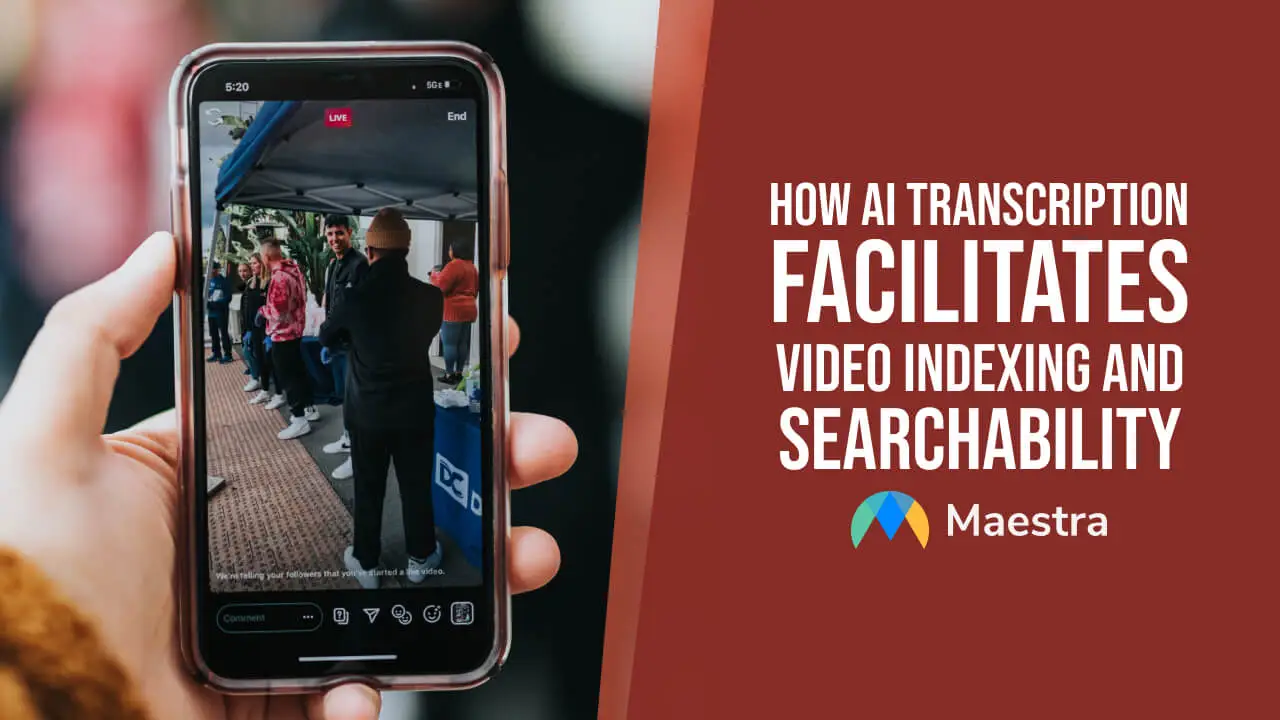How AI Transcription Facilitates Video Indexing and Searchability

What is Video Indexing and Searchability?
Video indexing has two definitions. The first involves carefully watching a video, understanding what's in it, and then writing down what’s happening. This list includes things like what people are saying, what they're doing, where they are, and even what you can see in the video. It's basically a summary of the video's content. This type of video indexing can help you simplify your workflow. However, there’s an important second definition. Video indexing occurs when Google adds you to its database. Indexed videos show up in Google Search results. You'll see its title, a short explanation, a small picture, and a link to watch the video. Searchability within Google's video indexing means how easily someone can find a video using Google Search. If a video has good searchability, it will show up in Google when you search certain related keywords. This helps you find the video quickly. The more searchable a video, the more likely Google will index it and rank it higher in Search results.How Do AI Transcription Services Increase Searchability?
Transcription provides a text version of your video's content. This text helps search engines understand what your video is about. It also gives viewers a way to skim through the content before deciding to watch the video. You can get video transcripts either by manually transcribing content or running your videos through an AI-powered solution. Manual transcription provides you with full control over the process. However, this method is often time-consuming. It is not the most suitable option for larger videos or large transcription projects. AI transcription can do more in less time with fewer mistakes. It leverages natural language processing to create transcriptions in no time. An accurate transcript plays a huge role in increasing searchability. How does changing spoken words into written text make videos easier to find?AI transcription turns words into text
As previously mentioned, search engines like Google can index videos better when written words are made available along with the video content. AI-made transcripts catch essential words and phrases that help search engines figure out what the video is about. When people search for similar things, videos with these exact words in their transcripts are more likely to show up in search results.AI transcription creates captions and subtitles
AI-made transcripts simplify the process of adding captions and subtitles to videos. These text overlays can be understood by search engines, increasing the chances of the video appearing in search results when people search for specific words. Accessibility can increase searchability. Plus, captions and subtitles help people with hearing impairments understand the content. This serves to open up an entire audience that would normally miss out on videos that were not captioned.AI transcription can facilitate translation
AI transcription can work with different languages. This means the video can reach more people, even those who search in multiple languages. A prime benefit is that AI can automatically translate material so you don’t have to.AI transcription is accurate
Transcripts made by AI are usually accurate. A clean transcript helps search engines understand the video's content better and put it in the correct category.Use Artificial Intelligence to Transcribe Your Videos
The realm of language modeling and artificial intelligence has exploded in recent years. High-quality speech-to-text conversion is now achievable through advanced AI models. Automatic speech recognition (ASR) technology, harnessing the power of AI, enables the real-time transformation of spoken words in video files into accurate written text. This innovation saves time and offers online learning platforms and other enterprises an effective tool for enhancing accessibility and engagement. Manual transcription typically requires you to:- Play and pause the video where you want to extract text.
- Use a text editor to enter the corresponding dialogue or text into the document as you pause the video.
- Mention speaker names or any pertinent details.
- Rewind the video and replay the segment to confirm you got it right.
- Proofread the text for inconsistencies or errors.
- Note time durations within the transcript if you want timestamps.
- Upload the file.
- Review the transcript.
- Export the text as a Microsoft Word document, a PDF, or a plain text file.
What to Expect From Maestra’s Automatic Audio-to-Text Converter?
- The solution detects speakers and time codes.
- Fast turnaround time of only a few minutes.
- You can edit the transcript through Maestra's advanced built-in text editor.
- The solution supports over 80 languages, automatically transcribing and translating audio files with ease.
- Enjoy automatic capitalization and punctuation such as commas and periods.
